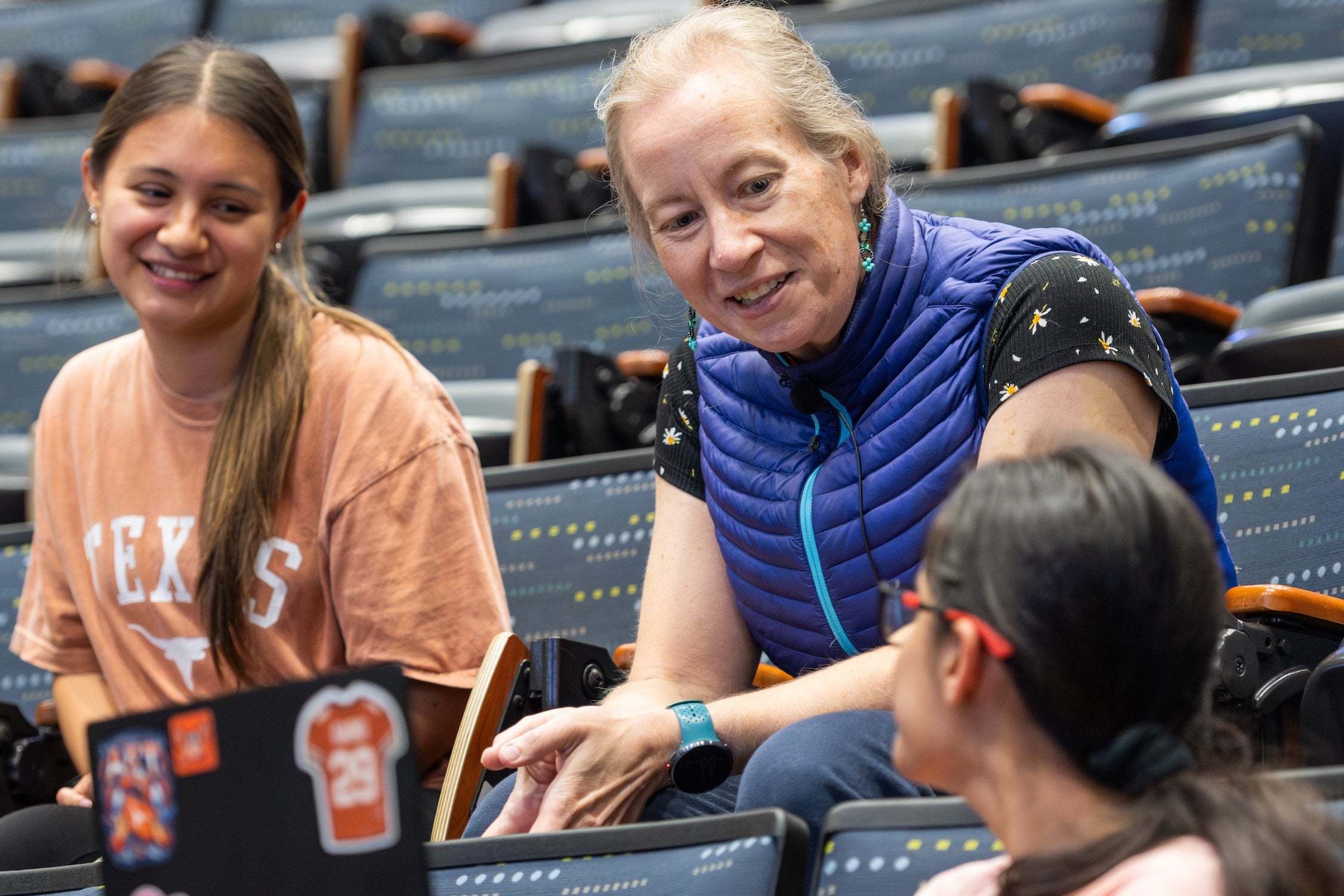Visualizing Science 2017: Finding the Hidden Beauty in College Research
Five years ago the College of Natural Sciences began an annual tradition called Visualizing Science with the intent of finding the inherent beauty hidden within scholarly research.
Each spring faculty, staff and students in our college community are invited to send us images that celebrate the splendor of science and the scientific process. Every year they deliver the moments where science and art meld and become one, and this year is no exception.
The pursuit of scientific discovery often contains a visual aspect, as researchers explore the topics that fascinate them and attempt to communicate their discoveries in a meaningful way. History is rife with examples: Su Song drew detailed star maps, Charles Darwin sketched evolutionary trees in his notes, Rosalind Franklin’s X-ray diffraction images were vital to determining the structure of DNA, and Richard Feynman’s diagrams helped transform theoretical physics, to name a few.
Now, with the advent of supercomputers and sophisticated software, scientific visualizations are becoming an invaluable part of the discovery process. Many modern scientists use 3-D models and data visualizations to uncover hidden patterns in data, to expose the inner workings of life or to reveal the very structure of the universe. This trend is exemplified by several of our newest Visualizing Science award winners.
The winning images this year were publicly revealed at Art in Science, an event put on by our Natural Sciences Council as part of Natural Sciences Week [Click here to see photos from the Art in Science event]. These finalists, seven of the most stunning submissions from our scientific community, are featured below. The first six images were chosen by committee based on their beauty and scientific merit. The final image, our Facebook favorite, was chosen by the public on our Facebook page. The first six images will be displayed on campus in The University of Texas at Austin Tower and the Kuehne Physics Mathematics Astronomy Library, as well as on digital screens throughout buildings in the College of Natural Sciences.
Please enjoy the fruits of our fifth annual Visualizing Science competition:
FIRST PLACE

Most stars in the Universe are not in isolation, but rather form in clusters. In the most compact clusters, a million stars as bright as a billion suns are packed within just a few light-years. This image shows the turbulent gas structures in a three-dimensional, multi-physics supercomputer simulation during the formation of such massive clusters, with the red-to-violet rainbow spectrum representing gas at high-to-low densities. Stars are the fundamental building blocks of galaxies, and of the Universe as a whole, and understanding star formation provides crucial insights to the history and future of our cosmos. The simulation and the visualization were produced locally on the Texas-sized supercomputers, Stampede and Lonestar 5, at the Texas Advanced Computing Center (TACC). — Benny Tsang, Astronomy Graduate Student.
SECOND PLACE

This three-dimensional high-resolution X-ray computed tomography (CT) image differentiates between the bony chainmail (in orange) embedded in the skin of a Komodo Dragon and the underlying bones of its skull (in white). The chainmail is formed by bony deposits in the head called cephalic osteoderms. The Komodo was donated by the Fort Worth Zoo after its death. Travis LaDuc catalogued the specimen into the Biodiversity Collections and made arrangements to have it scanned by Jessie Maisano in the Jackson School of Geosciences’s CT facility. The image is part of a manuscript being submitted to a scientific journal, featuring four authors: Chris Bell and Jessie Maisano of UT Jackson School of Geosciences; Diane Barber of the Ft. Worth Zoo; and LaDuc. — Travis LaDuc, Curator of Herpetology in the Department of Integrative Biology.
THIRD PLACE

In this computer simulation of a diffusion process, particles are dropped in the center of a circle and then move randomly about its area until they meet another particle to which they stick. As they accumulate, the particles form growing fractal structures that are called Brownian Trees. One example of where these structures can be found in nature is in electro-chemical deposition processes, such as electroplating. — Lukas Gradl, Physics Graduate Student.
HONORABLE MENTIONS
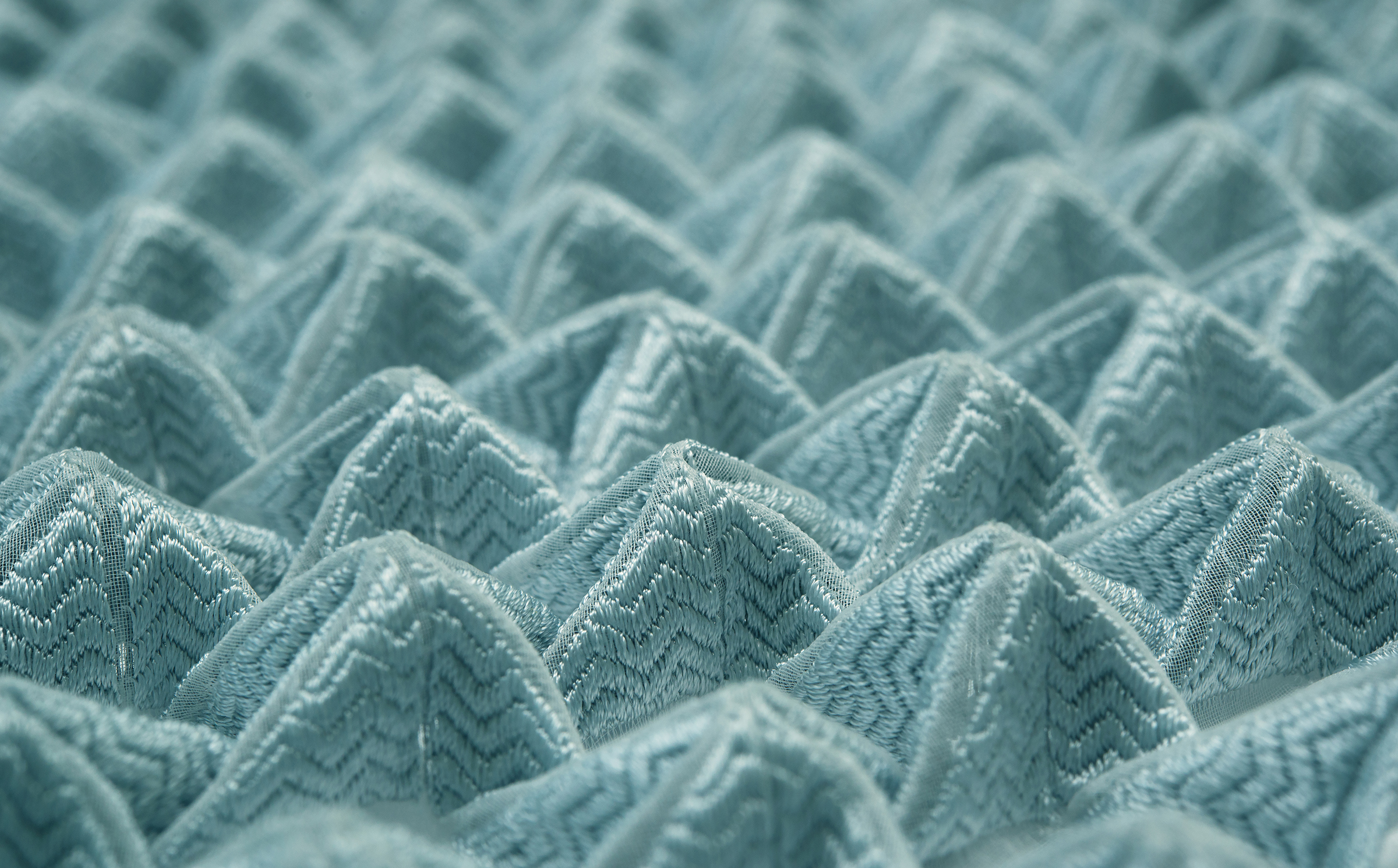
A close-up of a fabric that was embroidered using algorithmic design and patterning. The process includes programming the repetitive algorithm, designing and trying a pattern that will work best in holding the structure, hand folding, industrial steaming and chemical treatment. — Luisa Gil Fandino, Lecturer, Division of Textiles and Apparel.
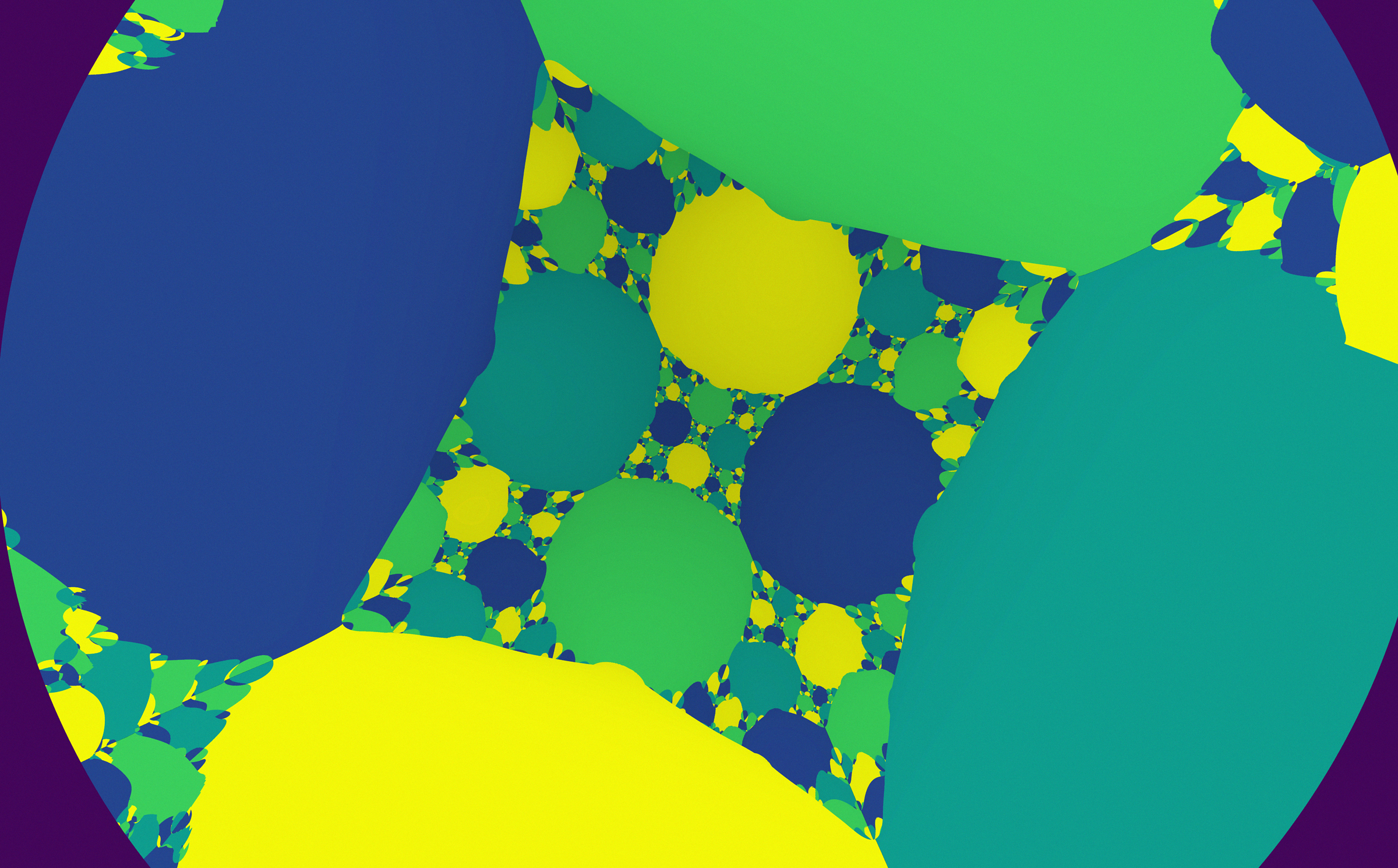
Quantum computers run on magic states, a valuable resource required for some quantum operations. Understanding which quantum states are magic and which are not can be tricky. When states are plotted in 3-D space, the magic states form a bubbly fractal, as seen here. — Patrick Rall, Physics Graduate Student.
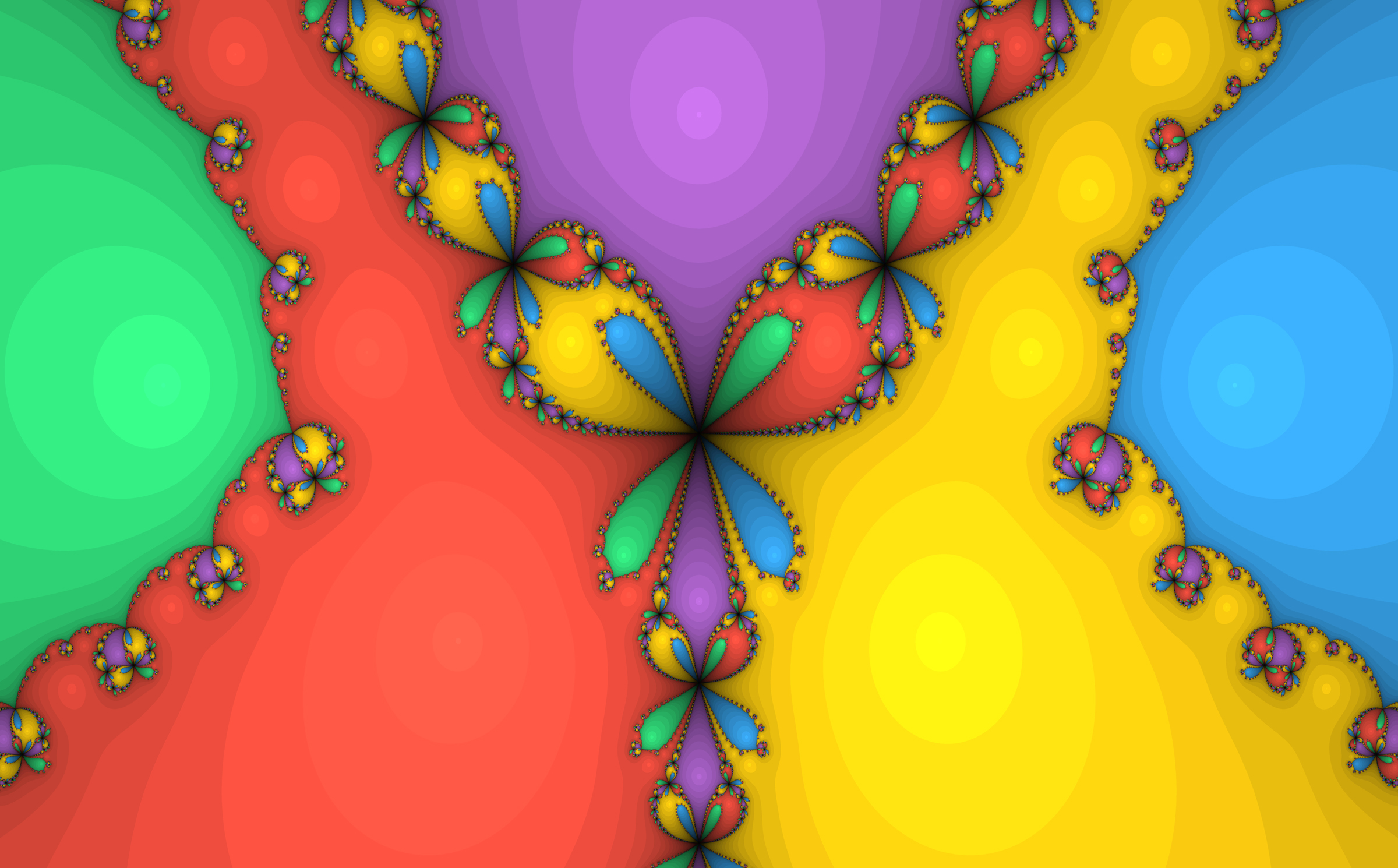
Newton’s method is a way of finding where a function is equal to zero. It’s simple and generally very effective, but small changes in the input can lead to large differences in the output. Though this makes its implementation more difficult, it also creates a fractal structure called a Newton fractal. In this image, Newton’s method was applied to many different inputs to graph the fractal: color represents the output of the algorithm, and shading represents its convergence time. — Arun Debray, Mathematics Graduate Student.
FACEBOOK FAVORITE
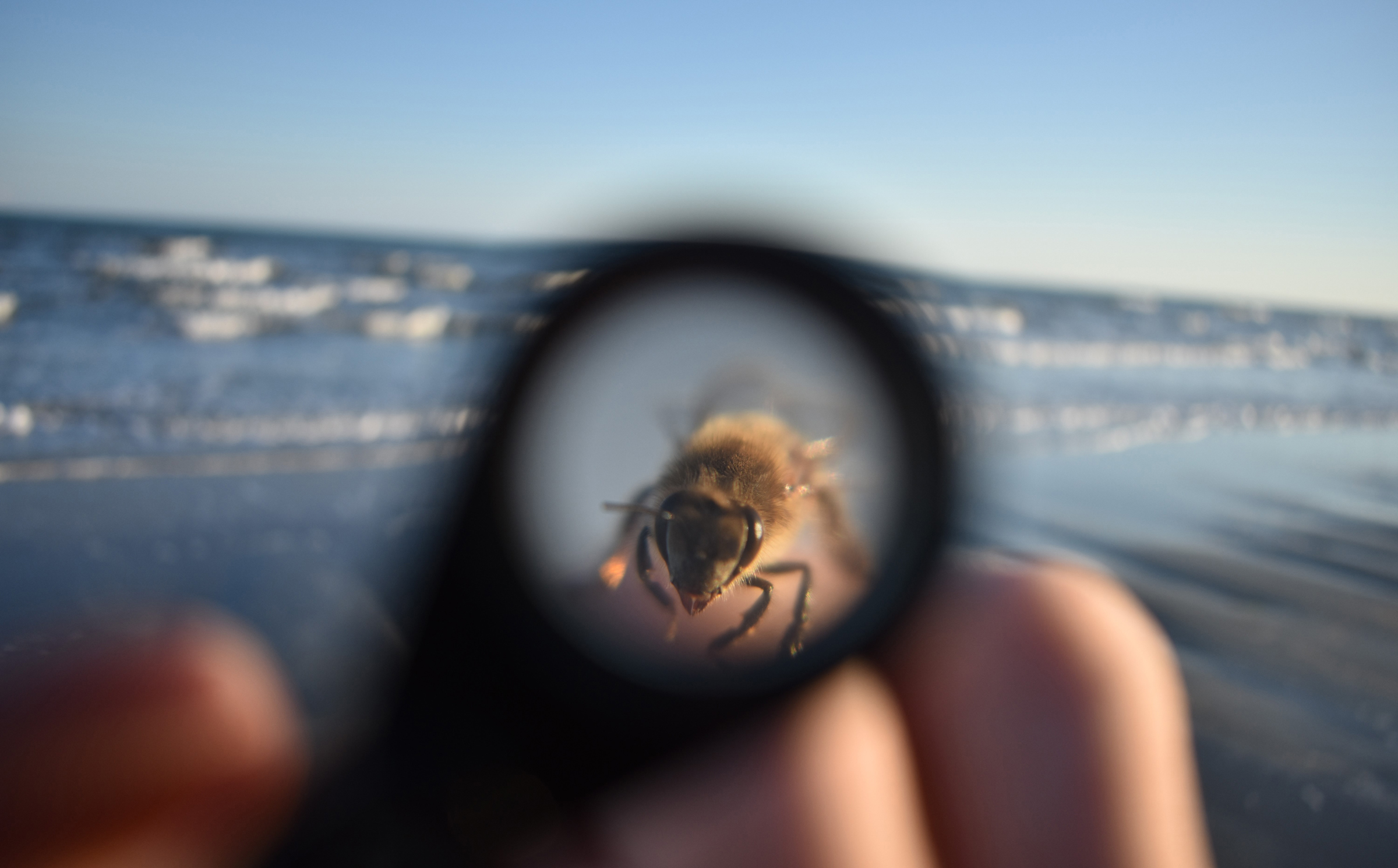
This photo captures a serendipitous moment during a trip to Port Aransas for a Field Study Seminar course in Environmental Science. Alec was using a hand lens to take notes about the grain type of the beach sand when a honeybee landed on his lab partner’s hand. Alec held his lens up to the bee, quickly grabbed the camera from his bag and snapped the picture before the visitor bee flew off. — Alec Blair, Environmental Science (Biological Sciences option) Undergraduate Student



